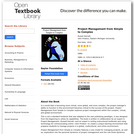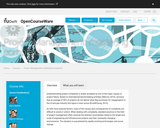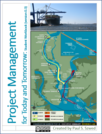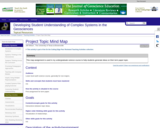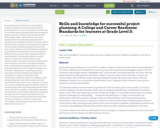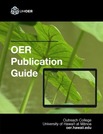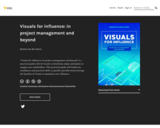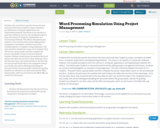
Adapting to a changing climate will involve governments, businesses, societies and other organizations with diverse perspectives, mandates and capacities. Project managers, through their effective direction of complex projects, occupy a critical role and must ensure that their projects consider the implications of a changing climate. This course will help you recognize climate change factors that could affect successful outcomes for your project and formulate strategies you can use to address them. You can expect to leave this course better prepared to add a climate change lens to your project planning.
- Subject:
- Applied Science
- Business and Communication
- Environmental Science
- Environmental Studies
- Life Science
- Management
- Public Relations
- Material Type:
- Case Study
- Full Course
- Module
- Reading
- Author:
- Adaptation Learning Network ALN
- Date Added:
- 11/04/2020

